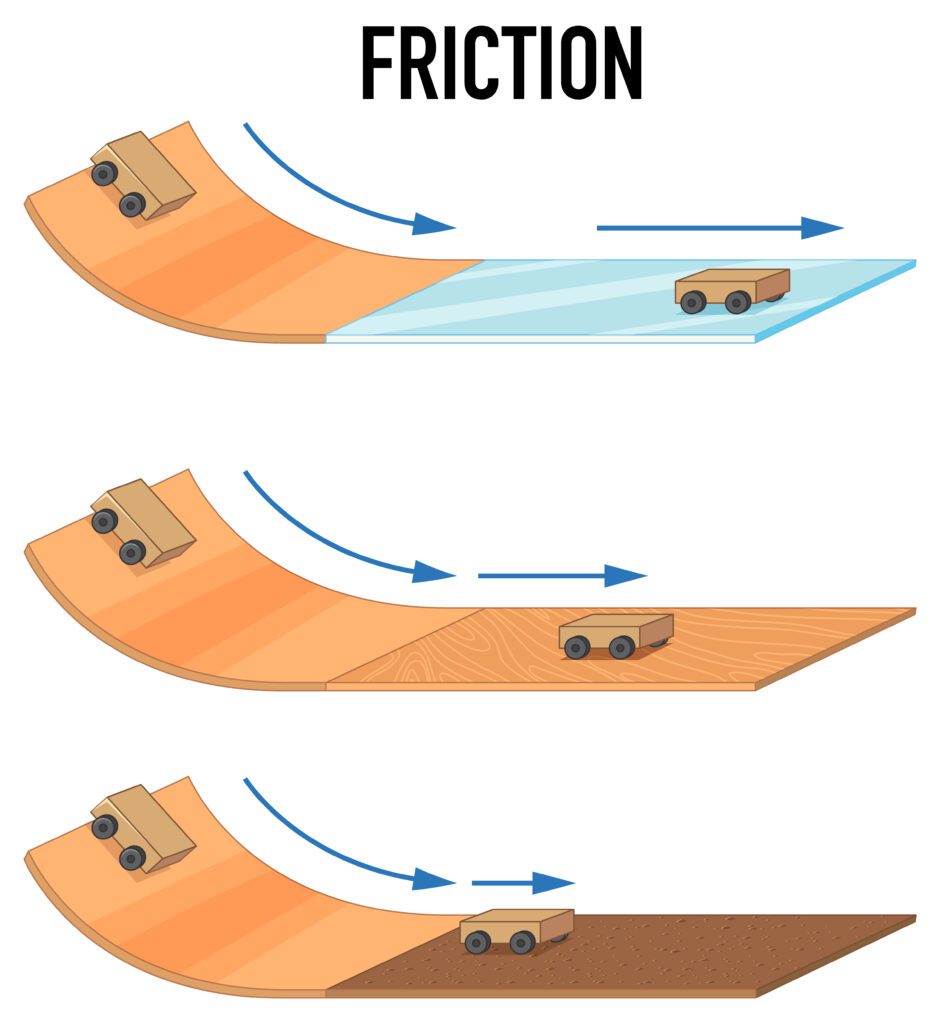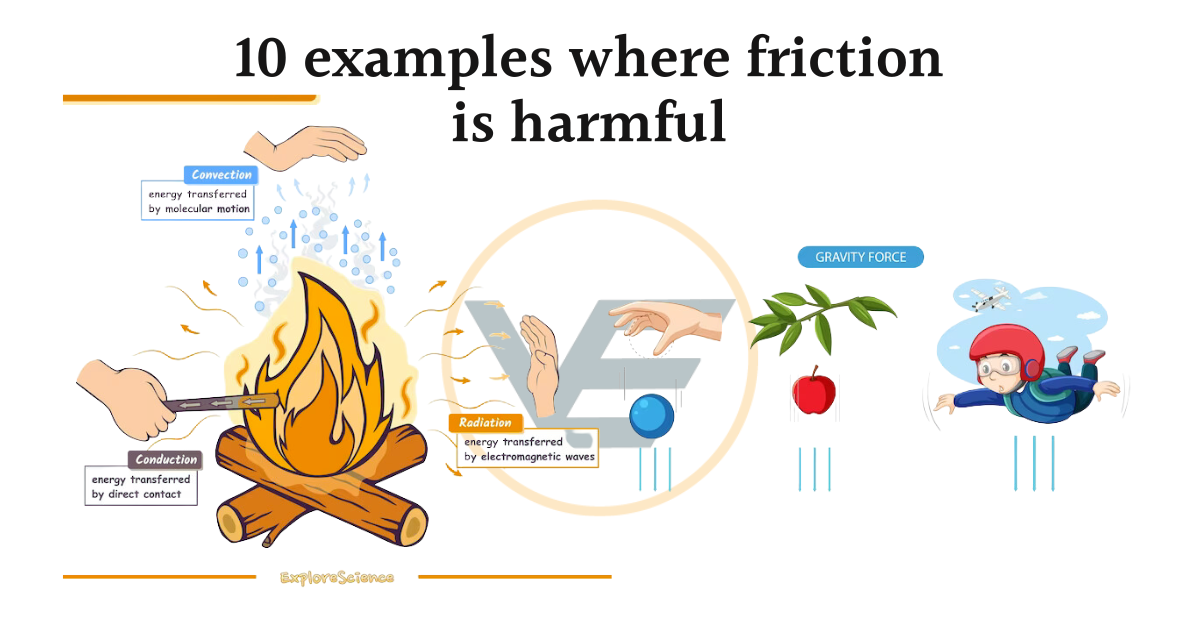Friction is a force that opposes the relative motion or tendency of motion between two surfaces in contact. It plays a crucial role in everyday life, affecting the movement of objects and the efficiency of various mechanical systems.

Examples of Friction
Here are 10 examples where friction is harmful:
- Brake Wear in Vehicles: Friction between brake pads and discs generates heat and wear, leading to reduced braking efficiency over time.
- Joint Pain: Friction in joints can cause discomfort and pain, as in the case of arthritis and other joint-related conditions.
- Machine Components: Friction between moving machine parts can cause excessive wear and tear, leading to mechanical failures and downtime.
- Surface Abrasion: Friction between objects can lead to surface abrasion and damage, such as the wear on shoe soles or tires.
- Highway Traffic Congestion: Friction between vehicles on crowded highways contributes to traffic congestion and delays.
- Heat Generation in Electronics: Friction in electrical contacts can produce heat and lead to energy loss in electronic devices.
- Skin Chafing: Friction between skin and clothing or other surfaces can cause painful chafing and irritation.
- Overheating of Machinery: Excessive friction in machines can generate heat, leading to overheating and potential damage.
- Airplane Landing Distances: Friction between airplane tires and the runway affects landing distances and can impact aircraft safety.
- Energy Loss in Engines: Friction in engines reduces overall efficiency by converting some energy into heat.
While friction is a crucial force in many applications, these examples demonstrate how it can also have harmful effects in various situations. Engineers and designers often work to minimize and manage friction to improve the performance and longevity of systems and devices.

